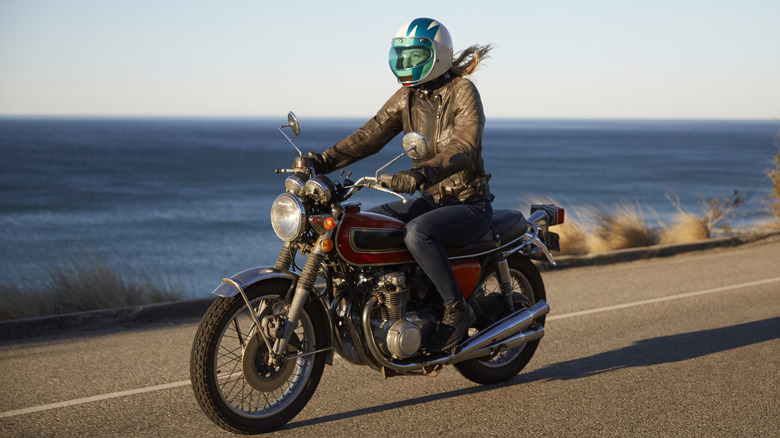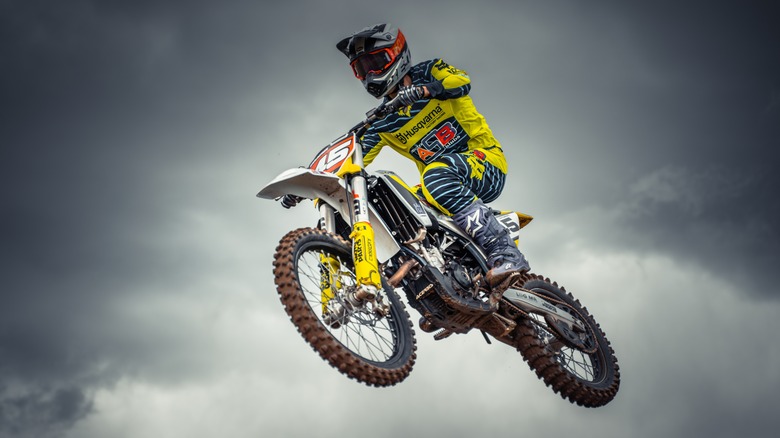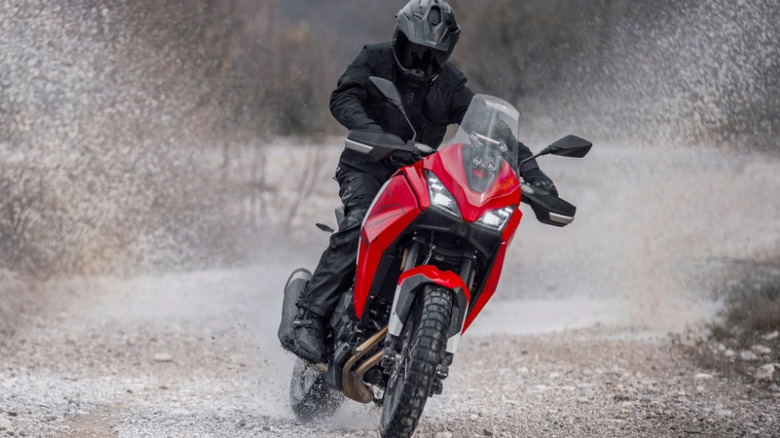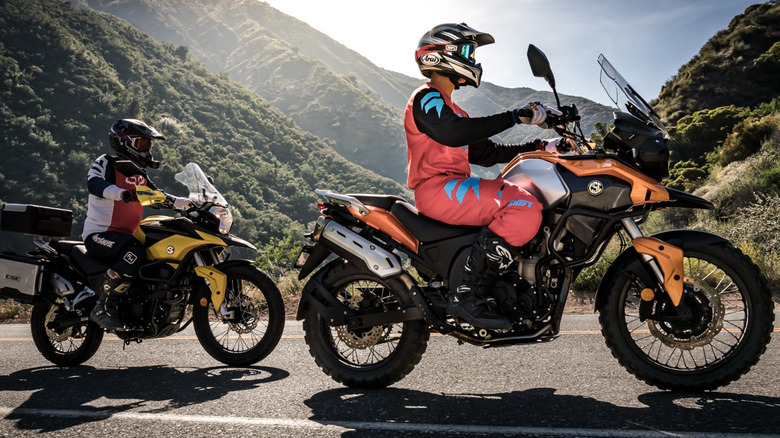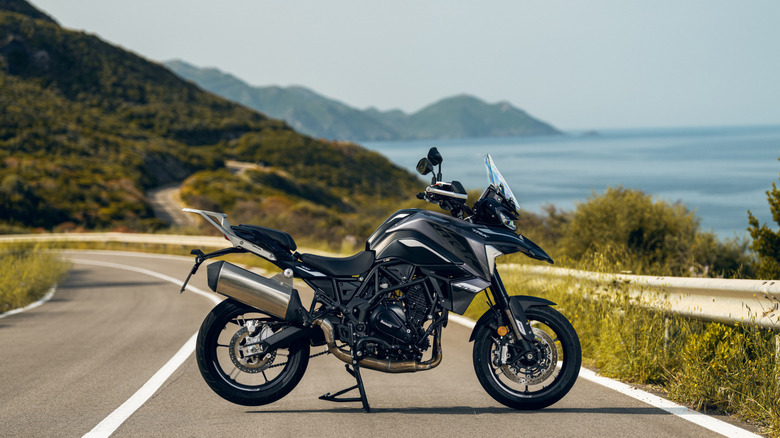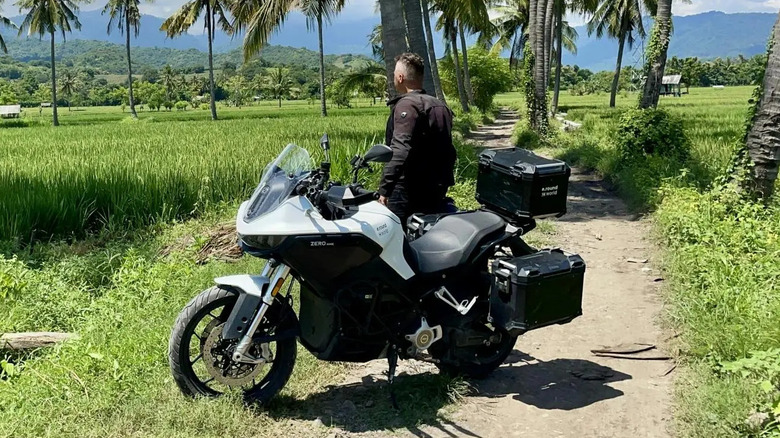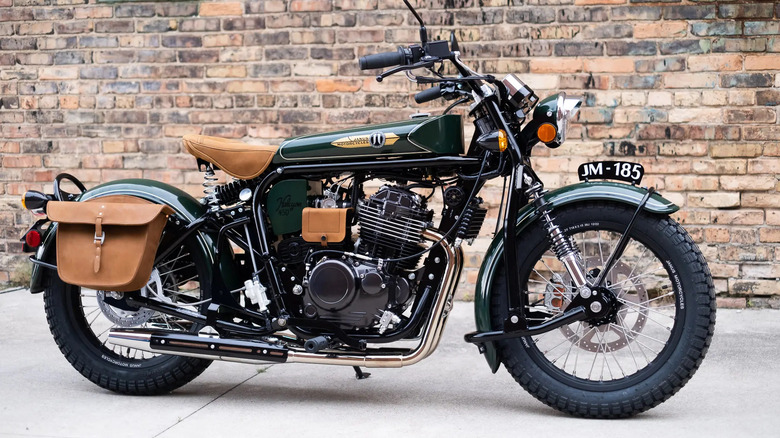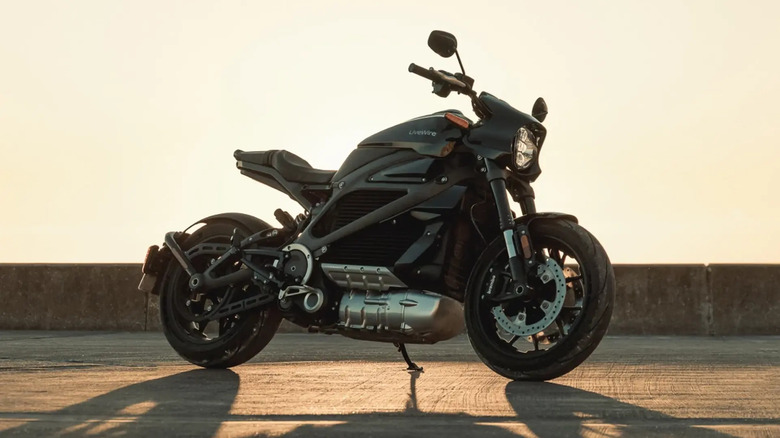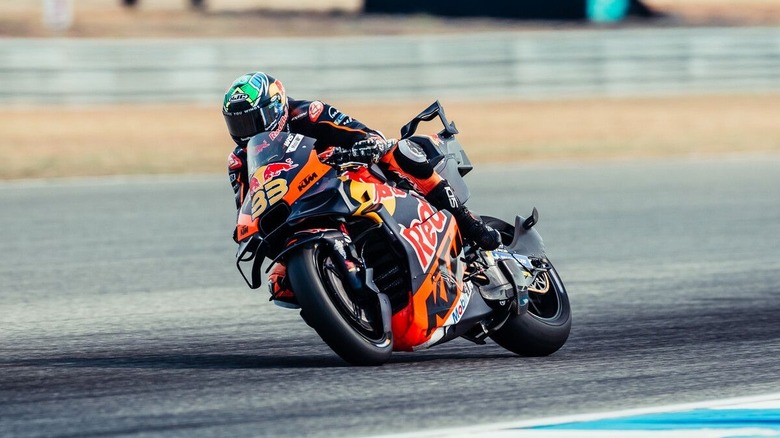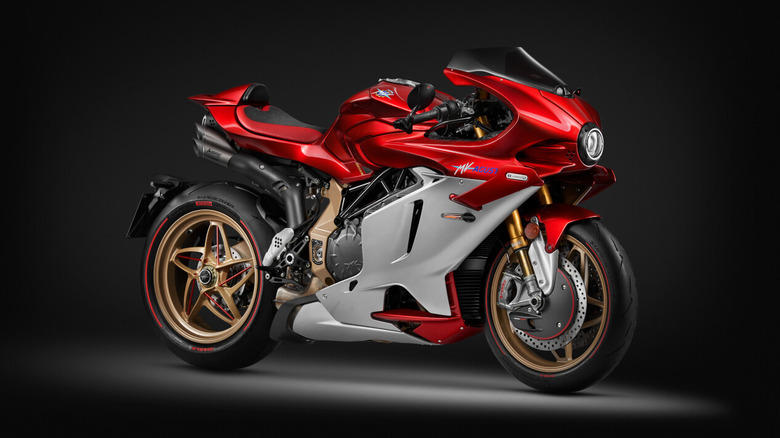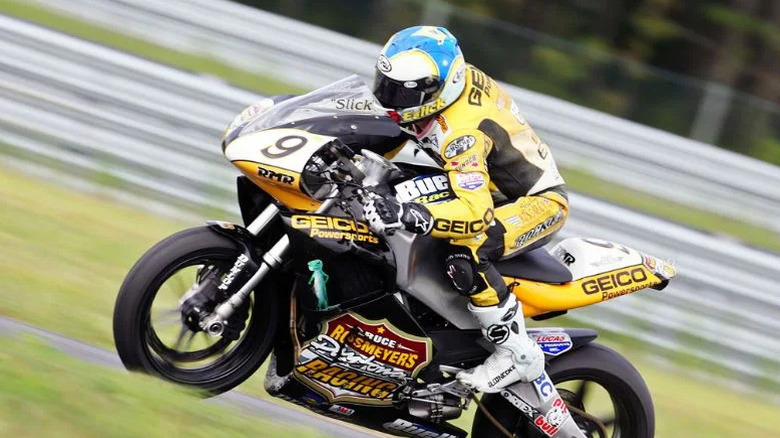10 Underrated Motorcycle Brands That Deserve More Love
The world of motorcycles has its darlings, like Harley-Davidson, Yamaha, Honda, and Ducati. Some are famous for looking cool, others for making the fastest motorcycles in the world. These days, when you hear the word motorcycle, chances are that one of these makes will spring to mind, but what if we told you that there are loads of other companies out there? Ones that operate in the U.S. and that have solid engineering, distinctive styling, and, in many cases, better value, but without the celebrity endorsements and million-dollar T.V. ads?
So, the question becomes: Are these smaller and less well-known makers any good? Should we be giving them more attention? And the answer is a resounding yes — just because they are smaller doesn't mean that they're not worth our time. In fact, these underdogs often produce some of the most interesting machines on the market precisely because they don't have to please marketing departments, focus groups, and shareholders whose idea of risk is ordering spicy food at a chain restaurant.
The brands on this list may not have the prestige of legacy manufacturers, but what they do have is potential — and in some cases, brilliance. Some are startups with fresh ideas, some are resurrections of historic names, and others have been quietly building excellent machines for years while barely registering in the public consciousness. Here are 10 motorcycle brands that deserve far more attention than they get in the American market.
Husqvarna
Husqvarna was founded in a town called Huskvarna in Sweden — that's where it gets its name from — all the way back in 1689. Of course, there were no motorcycles around in the 1600s, but that didn't matter, for back then Husqvarna was an arms company making muskets for the Swedish army. It rolled out its first motorcycle in 1903, though it was little more than a bicycle with a motor attached to it, and hasn't stopped since. From the 1920s onward, Husqvarna Motorcycles began participating in some of the most grueling and challenging motorcycle events across the globe, like the motocross world championship (MWC), Enduro-Europe, Baja, and, of course, the Isle of Man TT. At these races, Husqvarna absolutely dominated, with 11 Baja first-place wins, 14 MWC championships, and a mind-boggling 24 Enduro-European victories.
Husqvarna is owned by Pierer Mobility today and is one of the world's oldest motorcycle companies, behind only Royal Enfield, Peugeot, Indian Motorcycles, Triumph, and Harley-Davidson. Some of the coolest Husqvarna models offered were the Silverplien, designed for off-road use in 1955, the Svartplien and Vitplien, which were both road bikes, and of course, the legendary 701 Supermoto.
Today, you can get Huskies, as they are colloquially known, in many different forms and across many different use cases. The TE 250 offering has attained legendary status in the world of motocross, and its touring options are also top-of-the-line. For a company that has sold 360,000 units worldwide and has such a rich history, it's criminally underrated in America. And for those who are interested, Husqvarna Motorcycles has an amazing collection of curated stories pulled from its archives that you can and definitely should read.
Moto Morini
Moto Morini is an Italian house that was started by a man called Alfonso Morini way back in 1937, two years before World War II. Initially opened in Bologna, Italy, the company solely focused on making three-wheeled cart-like vehicles at the time, because these had less taxation, didn't require any licenses, and were 60 to 70% cheaper than small trucks. In 1946, after the war ended, Morini decided to take a different track, now focusing exclusively on making motorcycles. However, with his factory bombarded and completely destroyed, and little to no experience in the two-wheeled space, the question now was where to start?
Because the old factory in Bologna was destroyed, the Moto Morini motorcycles were made out of a new factory, also in Bologna, and christened "Italy's motorcycling success of the year". And successful they were, for within three years, a four-stroke 125 cc Moto Morini won the GP world championship, beating out MV and Mondial. Morini continued to win races throughout the '50s, '60s, and '70s, and introduced its first 350 cc bike, the Corsaro, in 1975, followed by a 500 cc model in 1977.
Moto Morini underwent a complete rebranding in 2005, when it unveiled the monstrous Corsaro 1200. In 2007, it followed up with the equally insane Scrambler 1200 and Granpasso 1200 models. Today, the brand offers eight models: two scramblers, two cruisers, two adventure bikes, and two roadsters, with prices between $5,999 and $9,799.
CSC Motorcycles
CSC is an acronym for California Scooter Company, though its modern offerings are anything but scooters. Headquartered in Azusa, California, the company was founded in 2008 by Steve Seidner, and its bikes are heavily inspired by the Mustang motorcycles made by Mustang Motor Products in the 1950s.
The first CSC had a 150 cc engine that managed to net 90 MPG and a fair number of modern amenities like electric start, turn indicators, a modern suspension, and, of course, emissions control. In 2012, four years after its founding, CSC entered into a collaboration with Zongshen, a motorcycle manufacturer in China. The first result of this partnership targeted the small adventure-touring motorcycle segment in the U.S., which had remained largely unpenetrated until then.
The bike to change all that was the fuel-injected RX3 Adventure, which used a 250 cc engine mated to a six-speed transmission. Now, a major problem with imported motorcycles, or any foreign-made motorcycle in the U.S., is the availability of spare parts. CSC told Zongshen that if the partnership were to continue, spare parts for all CSC-sold models had to be readily available. Zongshen agreed, and as a result, we get some foreign-made motorcycles in the U.S. with decent after-sales support.
After the success of the RX3, CSC followed up with the RX4, a 450 cc successor to the adventure-touring RX3. Today, the company offers several models across different classes, the most popular of which are the 230 cc, $2,995 SG250 San Gabriel, the $2,995 dual-sport TT250, and the $5,995 RX6 Sport Touring.
Benelli
Italian by blood, Chinese by business, and criminally overlooked — that's Benelli. It isn't the oldest Italian motorcycle brand — that honor goes to the now-scooter-only company Gilera — but Benelli is the oldest Italian marque that still makes motorcycles. In 1911, six brothers of the Benelli family opened an auto garage that specifically repaired bicycles and motorcycles. The Benellis launched their first bike in 1919. The initial Benelli engine displaced 75 cc, had a two-stroke operation, was mated to a bicycle chassis frame, and in the company's own words, "did not produce satisfying results". The first true Benelli motorcycle made its debut in 1921 and was named the Velomotore. This model was built on the failure of the Benelli efforts so far, and came in two 98 cc flavors, both two-stroke: a Touring and a Sport model.
A 147 cc version of the Velomotore was unveiled in 1923, and in 1926 Benelli came up with a revolutionary four-stroke 175 cc engine that would net the company several motorcycle race victories in the years to come. Then, of course, World War II happened, and the Benelli factory was destroyed and rebuilt. One of the brothers left to start his own company, Motobi, which would eventually merge back with Benelli in 1962.
In the early 2000s, we got the three-cylinder Tornado superbike with bells and whistles like Marzocchi forks and Brembo brakes, and today, we have the Leoncino and the T-series bikes like the Benelli TNT 135. The TRK 502X is quietly one of the best value adventure bikes on the market, weighing in at a stable 469.6 pounds, making 46.9 horsepower and 33.9 lb-ft of torque from a two-cylinder, four-stroke, 500 cc engine.
Zero Motorcycles
Zero has been building fast, torque-y EV bikes long before the big brands woke up, and its SR/F proves you don't need gas to scare yourself like you were on a BMW M1000RR on a canyon road. Started in Santa Cruz, California, in 2006, today the company offers four different lines with 10 different models. The former entry-level units come from the Zero FX line, under which there are two models: the FX and FX-E, both of which retail at $12,495. The FX line from Zero falls into the Dual Sport category, as does the slightly more performant DS line.
The Zero DS line has three models under it: the DS, DS/R, and DSR/X, from least to most powerful. The two newest entrants into the Zero catalogue are the X-line offerings, the $4,195 XB and the $6,495 XE, which replace the FX line as entry-level models.
At the top of the range, we have Zero's S line offerings, which the company considers to be the ultimate in electric motorcycles. The S-line has three models, which are the $14,995 S, $20,495 SR/F, and $20,995 SR/S. The SR/S is the cream of the crop, coming in with 111 hp, 140 lb-ft of torque, 171 miles of range per charge, and a charging speed of zero to 100% in just 1.1 hours. The SR/S uses the latest Zero Z-Force 75-10 e-motor, which pushes this motorcycle to a top speed of 124 mph.
Janus Motorcycles
Out of Goshen, Indiana, Janus hand-builds small-displacement bikes that look like something Steve McQueen might've taken for a Sunday blast. Its bikes are more of an art statement piece than racing bikes, but they are worth every penny. The company was started in 2011 by founder-CEO Richard Worsham, a man who, by all accounts, has been obsessed with motorcycles from a young age. Janus motorcycles have a unique twist to their manufacturing process in that most parts of your bike will be made within 20 miles of the Goshen headquarters office. This includes major components like the fenders, forks, frame, handlebar assembly, handmade fuel tank, axle, and more.
It's a very Build America, Buy America philosophy, and deserves commendation, especially since so many manufacturers are looking to outsource components to save on cost. Another unique aspect of Janus is its sales model. You go to the website, spec your bike, and when it's made, you go to the factory to pick it up amidst much revelry, or have it shipped to your door for $900. That's it — no dealers, suppliers, or other middlemen: just you, your Janus, and the road.
Currently, Janus has a model lineup of four bikes: a $6,995 250 cc scrambler called the Gryffin, which also comes as a $13,495 450 cc, and the Halcyon, available in a $6,995 250 cc and a $12,995 450 cc air-cooled configuration. All models have virtually unlimited customization options as far as design and accents are concerned.
LiveWire
An electric Harley-Davidson might seem at first glance to be an absurd offering. After all, Harley-Davidson's history is thunderous V-engines that eat up highway miles on the open road. However, that's exactly what LiveWire is — the electric motorcycle division of Harley-Davidson, which would later split off into a separate company altogether.
The first offering from this group was unveiled in 2014 and wasn't a production model, being intended as a testbed for reviewers to check out. The thing didn't even have a name and was referred to simply as The LiveWire by production houses that got a chance to take it for a spin. That was part of Harley's Project LiveWire Experience, where a few prototypes would be taken on tour across the U.S. and even into Canada and Europe between 2014 and 2015.
When reviewers got their hands on it, they said that the bike was not as fast and not as loud as a gas Harley, but most agreed that it was one thing — fun. Fast-forward a few years, and we've only recently gotten the first production offering from the company, which someone has creatively named the LiveWire ONE. It was unveiled at the Milwaukee offices in July 2021, making the ONE quite a young motorcycle. It could charge from zero to 100 percent in an hour with a max range of 146 miles. All that is nice, but there was one major problem — it was $21,999. Today, LW offers four other models, the cheapest of which is $15,999, so there's quite a long way to go for these to be affordable. However, if you have the cash to splash on one of these, chances are you'll be impressed.
KTM
If we had to bet on one brand that you've most likely heard of on this list, it'd be KTM. The company started under the name Kraftfahrzeug Trunkenpolz Mattighofen in Austria in 1934, when the name registration request was filed. However, for some reason, the name wasn't registered. The company began operations anyway, with its primary business being the repair of Opel cars and DKW motorcycles. KTM would introduce a 100 cc motorcycle called the R100 in 1953, powered by a Rotax engine made by Fichtel, and this was its first mass-produced model. It achieved great success and drew attention from local businessmen.
Amidst the rising interest, a businessman named Ernst Konreig purchased a major stake in KTM and re-registered the business as Kronreif & Trunkenpolz Mattighofen. KTM would go on to use engines made by other companies until 1970, and rolled out its first 125 cc engine in 1976.
The good days were not to last. In 1991, the group was split up into four divisions: tooling, bicycles, motorcycles, and radiators, following a bankruptcy caused by declining sales. However, the brand was revived in 1992 and renamed to KTM-Sportsmotorcycle AG in 1994, and from then on it's been success after success. Today, KTM offers motorcycles in every class, starting from the 125 cc two-stroke, right up to the 1390 cc Duke R. And with more than 50 models on offer in the U.S. alone right now, there's bound to be something for everyone.
MV Agusta
MV Agusta has an aristocratic design, that's for sure, but did you know that it also had aristocratic origins? It was just past the turn of the century, and a nobleman from Sicily called Count Giovanni Agusta had developed a passion for machines that fly. He founded the Agusta aeronautics company in 1907 as an airplane manufacturing company, but production would drastically decline after World War I ended. To compound things, the Count would pass away in 1927, after which his wife and son would step up to handle the business. The son, Domenico, decided to diversify into the recently booming motorcycle business in light of declining aircraft demand, and thus, Meccaniche Verghera Agusta was born in 1945. The first motorcycle was launched the very same year, and was a 98 cc unit that was blandly named the MV 98.
The name may have been uninspired, but the MV 98 would go on to net the company's first race victory, putting MV Agusta firmly on the map as a motorcycle manufacturer. From 1992 to 2014, the MV Agusta trademark was owned by a competitor firm, and in 2014, Mercedes bought a stake in the company. Through its lifetime, MV Agusta was bought and sold over and over again, until the current owners purchased it in 2019, and are now reviewing the model lineup. Today, MV Agusta offers seven different motorcycle lines in the U.S., and 25 models within those lines.
Buell
Buell is what you get when a Harley-Davidson engineer decides to pack up and start his own thing, which is precisely what happened back in 1983 when Erik Buell unofficially founded the company. The first offering from Buell, called the RW750, was designed specifically to compete in the Formula 1 motorcycle road racing class under the American Motorcycle Association, but the race was axed in 1986. From then until 1993, Erik Buell ran an import-export business for racing parts and spares while consulting for Yamaha on the side. He would also make custom bikes that used Harley engines, and these got so popular that Harley took notice of the success.
In 1994, Buell's former employer, Harley-Davidson, would acquire a 49% non-controlling stake in the business as it wanted a piece of the pie that its engines were generating. In 1998, Harley acquired another 49%, giving them a supermajority stake and leaving Erik Buell with just 2% of the company he had founded, albeit with a long-term contract. In time, about 18 models would be released by Buell, of which a couple can be found in the video game, "Tourist Trophy". The Buell motorcycles of today keep the original philosophy. The bikes are loud, fast, and unapologetic, and range from two-banger nakeds to custom one-offs.
Many brands exist quietly with decades or even centuries of history and heritage behind them. So, the next time you're out shopping around for your next ride, give these stallions a thought.
